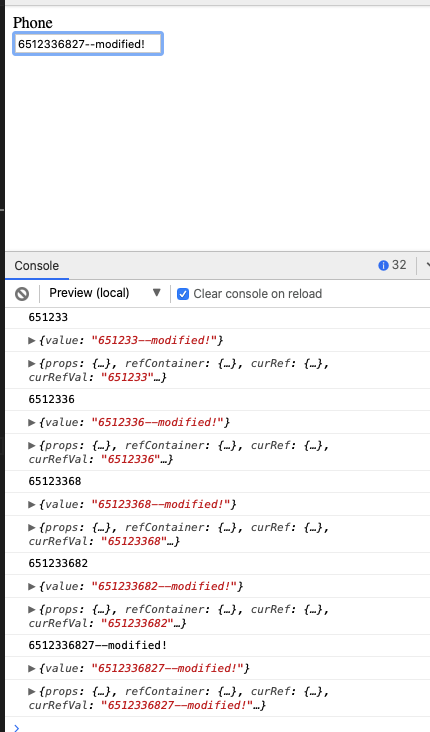getting refs to sync with container state
2019-09-24
|~3 min read
|438 words
I was working on a project recently which was using Refs in order to integrate with a third-party library.
My mental model for refs are that they allow you to view into the internal state of a component without tracking it explicitly. In that way, you can use it for calculations and without the overhead of making a component stateful that otherwise doesn’t require state.
My scenario looked something like this:

A stateful container with a component that stored business logic wrapping an input.
The goal was to find a way to lift the value of the input up to the top level container after processing it in a wrapper that contained business logic and without storing it in the wrapper as state. I also needed to be able to update the value of the input in certain situations based on business logic considerations.
Here’s a simplified version of what I came up with:
import React, { Component } from ‘react’;
import { render } from ‘react-dom’;
import ‘./style.css’;
const WrapperComponent = props => {
const refContainer = React.useRef({});
const { onChange } = props;
const curRef = refContainer.current
const curRefVal = refContainer.current && refContainer.current.value;
console.log({ props, refContainer, curRef, curRefVal })
const businessLogic = (val) => {
return val.concat(`—modified!`)
}
const handleChange = (e) => {
onChange(businessLogic(e.target.value))
if(e.target.value.length === 10) {
refContainer.current.value = businessLogic(e.target.value)
}
console.log(refContainer.current.value)
}
return (
<React.Fragment>
<div> Phone </div>
<input ref={refContainer} onChange={handleChange} type='tel'></input>
</React.Fragment>)
}
const App = () => {
const [value, setValue] = React.useState(null)
console.log({ value })
return (<WrapperComponent onChange={setValue} />)
}
render(<App />, document.getElementById(‘root’));Inspecting the console, we can see that this works!
My input has a value. My wrapper applies business logic and then passes it through to the container’s onChange method.
I can also format the value inside the input and change it when I need — as I did here when I reach a valid 10-digit phone number.

Conclusion
I don’t expect to use refs frequently. The React team discourages the practice for one except in certain circumstances (like working with 3rd Party Libraries which was the impetus to this exercise).1
Still, learning how I can use them to manage state without re-rendering a component when it changes can be useful, which is exactly what I did here.
Refs also allow you to reach up in React, at least if viewed from a certain perspective, and knowing about that is handy.
NB: I also put this into a Stackblitz if you’re interested in playing around2
Resources
Hi there and thanks for reading! My name's Stephen. I live in Chicago with my wife, Kate, and dog, Finn. Want more? See about and get in touch!